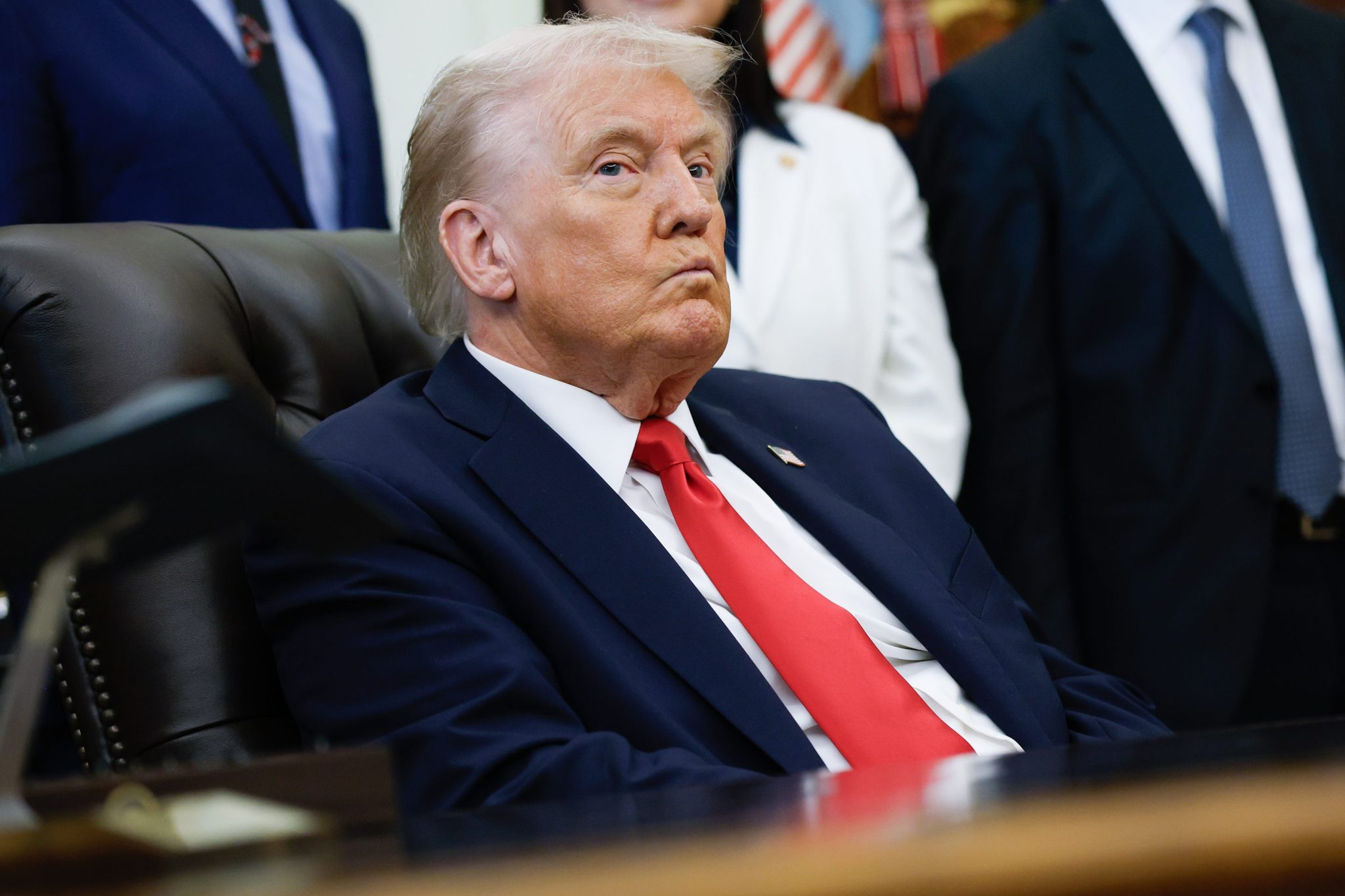
The U.S. immigration crackdown will cause net job losses in the millions and will lower the annual rate of economic growth by almost one-third over the next decade, a new study estimates.
The Trump administration’s policies aimed at legal and illegal immigration would reduce the projected number of workers by 6.8 million by 2028 and 15.7 million by 2035, the National Foundation for American Policy’s study released Friday found. People entering the workforce won’t fully make up for the job losses, leading to a net reduction in the labor force by a projected 4 million workers by 2028 and 11 million in 2035.
“With the U.S.-born population aging and growing at a slower rate, immigrants have become an essential part of American labor force growth,” the think tank, which focuses on trade and immigration, said.
In fact, immigrant workers were responsible for 84.7% of the labor force growth in America between 2019 and 2024, according to the report.
The study takes into account many of Trump’s far-reaching immigration policies for those eligible to work in the country, including reducing and suspending refugee admissions, a travel ban on 19 countries, ending Temporary Protected Status, and prohibiting international students from working on Optional Practical Training and STEM OPT after completing their coursework. The analysis does not account for a new policy that requires U.S. companies to shell out $100,000 in one-time fees for new H-1B visas.
Labor reduction
Trump’s immigration crackdown is already having an impact on the labor force.
The Bureau of Labor Statistics household survey shows a decline of 1.1 million foreign-born workers since the start of the Trump administration in January through August, according to the report.
And of the 6.8 million fewer projected workers in the U.S. labor force by 2028, 2.8 million would be due to changes in legal immigration policies, while 4 million would result from policies on illegal immigration, the study said
At the same time, it doesn’t look as though U.S.-born workers are entering the workforce en masse as foreign-born workers exit, the report said. Instead, the labor force participation rate for U.S.-born workers aged 16 and older has ticked lower to 61.6% in August from 61.7% last year, according to the report.
Labor economist and senior fellow at NFAP Mark Regets, said in the report it’s “wrong” to assume a decline in immigration helps U.S. workers when job growth slows.
“Immigrants both create demand for the goods and services produced by U.S.-born workers and work alongside them in ways that increase productivity for both groups,” Regrets said. “While it is just one factor, we shouldn’t be surprised that opportunities for U.S.-born workers are falling at the same time an estimated one million fewer immigrants may be in the labor force.”
But the White House says there’s a large pool of available U.S.-born workers.
“Over one in ten young adults in America are neither employed, in higher education, nor pursuing some sort of vocational training.” White House spokeswoman Abigail Jackson told Fortune in a statement, referencing a July 2024 CNBC article. “There is no shortage of American minds and hands to grow our labor force, and President Trump’s agenda to create jobs for American workers represents this Administration’s commitment to capitalizing on that untapped potential while delivering on our mandate to enforce our immigration laws.”
Economic fallout
Previous reports have warned Trumps’ immigration policies also threaten negative economic consequences.
In September, the Congressional Budget Office projected 290,000 immigrants will be removed from the country between 2026 and 2029, which may create a labor shortage and drive up inflation.
And according to the NFAP study, Trump’s immigration policies will lower the projected average annual economic growth rate to 1.3% from 1.8% between fiscal year 2025 to fiscal year 2035.
There are also ramifications for the agriculture industry and food production. The Labor Department admitted earlier this month in a filing in the Federal Register that Trump’s immigration crackdown risked a “labor shortage exacerbated by the near total cessation of the inflow of illegal aliens.”
That’s not the only sector feeling the talent squeeze.
The $100,000 one-time fee for workers applying for new H-1B visas is expected to disrupt companies including Amazon, Microsoft and Meta, since they heavily recruit workers under this status.
And the policies are projected to have far-ranging effects on most areas of business, including a potential loss of hundreds of thousands of immigrant workers in sectors like information and educational and health services.
In addition, individuals affected by Trump’s travel ban on 19 different countries represent a significant part of the economy, the American Immigration Council, a nonprofit research organization and advocacy group, has estimated.
Households led by the recent arrivals from the countries earned $3.2 billion in household income, paid $715.6 million in federal, state and local taxes and held $2.5 billion in spending power, according to AIC.
“These nationals made important contributions in U.S. industries that are facing labor shortages and rely on foreign-born workers,” like hospitality, construction, retail trade and manufacturing, the report said.
But the White House said Trump will continue “growing our economy, creating opportunity for American workers, and ensuring all sectors have the workforce they need to be successful.”
Nan Wu, research director at AIC told Fortune the recent NFAP study may not even fully capture the broader impact of the Trump administration’s immigration enforcement efforts.
“Given the unprecedented scale of these actions, it’s difficult to quantify the chilling effect they may have on immigrants who might otherwise choose to move to or remain in the United States,” Wu said. “For instance, international students—who are a critical source of high-skilled talent—may increasingly opt to pursue education or career opportunities in other countries. This shift could significantly disrupt the U.S. talent pipeline, particularly in sectors that rely heavily on STEM expertise and innovation.”







